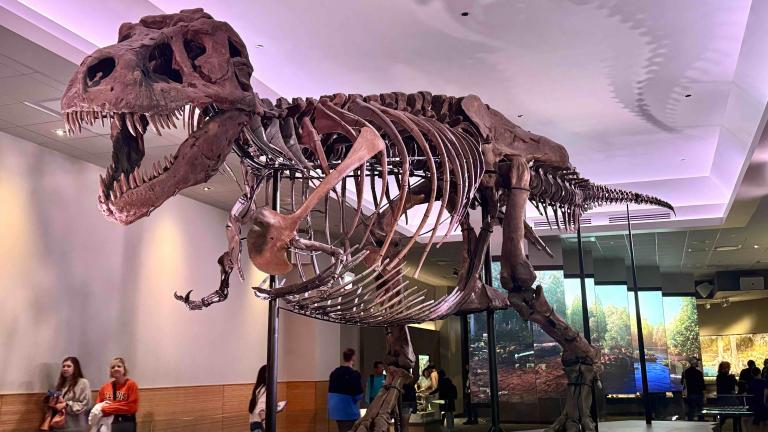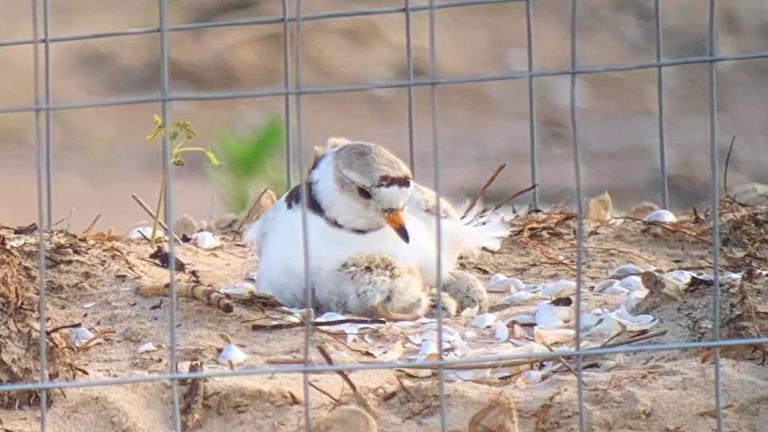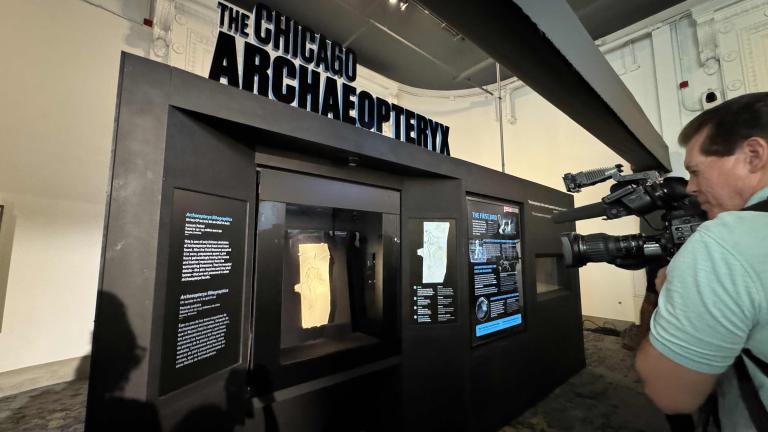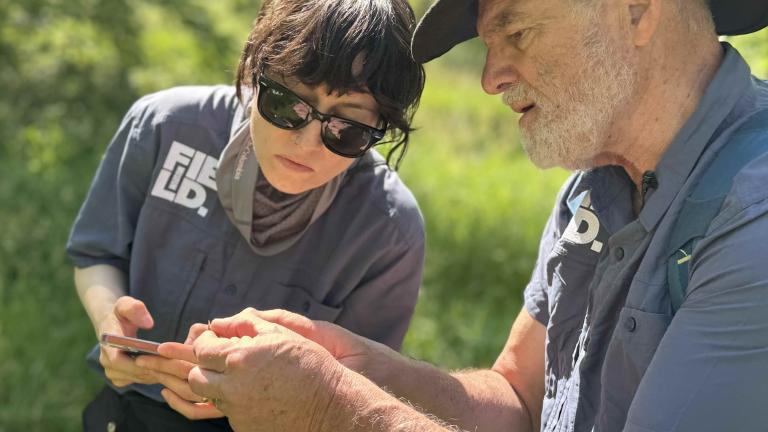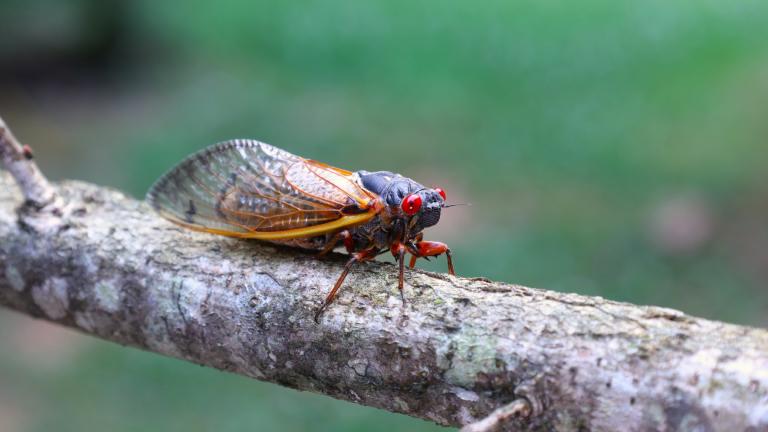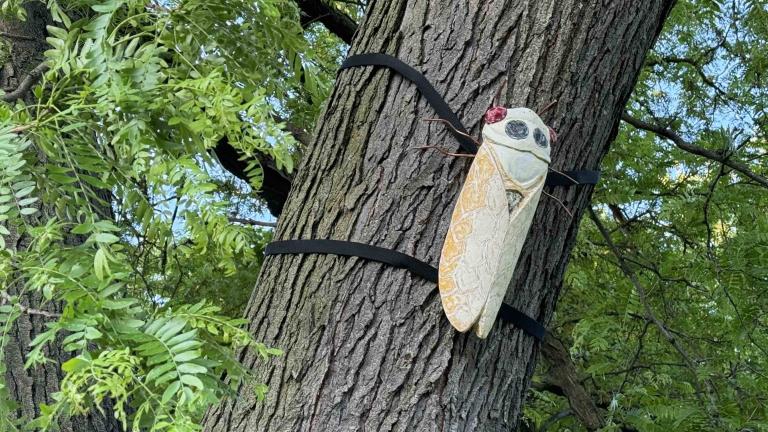On a trip to the Field Museum it's hard not to be impressed by the scale and diversity of the collection. From fossils that are millions of years old, to newer specimens gathered only recently.
But all of the Field's roughly 30 million specimens were, at some point, collected – at times on daring expeditions by curators that venture all over the world. So just what is the role and life of a curator?
Joining host Phil Ponce to share his insight is Lance Grande, the Negaunee Distinguished Service Curator at the Field Museum and author of "Curators: Behind the Scenes of Natural History Museums."
Below, an excerpt from “Curators: Behind the Scenes of Natural History Museums.”
![]()
I am a curator: one of the primary research scientists at the Field Museum in Chicago. I’ve been a curator for more than thirty-three years. I was inspired by curators before me who were influenced by curators before them.
The Field Museum is one of the largest natural history museums in the world. It houses more than 27 million specimens ranging from DNA to dinosaurs. For more than 120 years, curators have assembled this collection to study and document our planet’s biology, geology, and human culture. Their research has provided unique insight into the history and diversity of our world. While leading the Research and Collection division of the museum for more than eight years as a senior vice president, I came to realize that few people understood what a natural history museum curator does. That realization was the first impetus for me to write this book.
In major natural history museums of North America, the term curator is used for the research scientist whose job is to bring authority and originality to their museum’s scientific message. They explore the natural and cultural world through field expeditions; they do original research based on objects of natural or cultural history (“specimens” and “artifacts”); they disseminate knowledge of original scientific discoveries to students, other scientists, and the general public. Curators are passionate about their quest for understanding the Earth and its people. They challenge convention, sometimes even at their own peril, to enable scientific progress. The origins of curators and museums of cultural and natural history began long ago. The earliest known cultural history museum was established over 2,500 years ago by a Babylonian princess and her father in the ancient Mesopotamian city of Ur (now the Dhi Qar Governorate of Iraq). Princess Ennigaldi was a high priestess of the moon god Nanna, and the daughter of Nabonidus, last king of the Neo-Babylonian Empire. Nabonidus collected antiquities and is the earliest known archaeologist. In 530 B.C. he influenced his daughter to develop a museum focusing on the cultural history of Mesopotamia. She became the museum’s first curator and developed a research program around its collection of artifacts. This was centuries
before the study of natural history was established, and her study of culture was primitive by today’s standards. All advances in science must be considered within the context of their own time, and the idea of a research facility with an archived collection was a huge step for the sixth century B.C. Ennigaldi’s museum was active until around 500 B.C. when the city of Ur was abandoned due to deteriorating environmental conditions (prolonged drought and changing river conditions). There are no records of what happened to the princess. The museum was lost for thousands of years until it was rediscovered in 1925 by the famous archaeologist Leonard Woolley. While excavating an ancient Babylonian palace, Woolley discovered a large chamber with a curious collection of neatly arranged artifacts ranging in age from 2100 B.C. to 600 B.C. The objects were associated with a series of inscribed clay cylinders representing labels. Woolley soon realized that he had discovered the remains of the world’s oldest known museum.
The earliest known center for natural history research goes back about 2,300 years, to the third century B.C. The Lyceum, in classical Athens, was a center of scholarly research and learning where Aristotle developed one of the earliest hierarchical classifications of living things. He proposed a Scala naturae (“Great Chain of Being,” also called “Ladder of Life”) to classify plants and animals according to their structure. This classification, while not as sophisticated or as comprehensive as the later classification of Carolus Linnaeus, was one of the first to use the internal structures of organisms. Today Aristotle is considered to be the founder of comparative anatomy and the first genuine natural history scientist. He pioneered the study of zoology and made significant contributions to the studies of geology, botany, physics, and philosophy. Aristotle’s work was ahead of its time, and he eventually angered high religious officials, who denounced him in 322 bc for not holding the gods in honor. He fled Athens, fearing for his life, and died later that year of natural causes. Although Aristotle’s research was specimen-based, he left no surviving collection of museum specimens. In fact, we have little record of natural history collections made until the sixteenth century. Through the sixteenth and seventeenth centuries, natural history collections were generally personal accumulations of specimens and artifacts organized by people who made the bulk of their income as physicians, professors, or advisors to royalty or religious authorities. These collections were often associated with small museums that amounted to little more than what were called “cabinets of curiosities” (the word cabinet referring to a room rather than a piece of
furniture). These displays of eclectic and poorly organized objects were precursors to modern-day natural history museums. The collections sometimes blended fact and fiction, featuring faked mythical creatures (e.g., unicorns, mermaids, dragons, and gryphons) made from parts of real animals stuck together by barber surgeons. (At that time, surgery was the charge of barbers rather than physicians.) The purpose of a cabinet of curiosity was not scientific as we understand science today. Instead, these crude exhibits were meant to be theaters of wonder, propaganda, or even displays of personal wealth and power. Although many of the objects were authentic pieces of nature and antiquity, few of them ever made their way into modern museum collections.
During the eighteenth century, the concept of a museum collection gradually evolved from ephemeral displays of curios to being systematically organized libraries of objects documenting natural history and human culture. As the collections increased in sophistication, they became associated with scientifically minded research curators who developed improved methods of organization. One of history’s earliest curators of natural history specimens, whose systematically organized collection still exists today, is also one of history’s most important biodiversity specialists: Carolus Linnaeus (1707–1778). Linnaeus is widely regarded as the father of modern taxonomy (the branch of science concerned with classifying, naming, and organizing species). He had a doctorate degree and the equivalent of graduate students studying under him—although in his day obtaining a doctorate often involved a much simpler and shorter process than today, and he referred to his students as his “apostles.” Linnaeus left a lasting legacy for all curators and systematic biologists who came after him by creating the hierarchical classification system for all plants and animals that we still use: Species within Genera, Genera within Families, Families within Orders, Orders within Classes, Classes within Phyla, and Phyla within Kingdoms. Just as the Dewey decimal and Library of Congress classifications enable efficient retrieval of a single book volume from large libraries, the Linnaean system allows us to efficiently find information on a single species among the tens of millions that exist in nature. Linnaeus made extensive collections of plants and animals through fieldwork in several different countries, published many books on his research using these collections, and preserved much of his material for future generations. He named and classified over 13,000 species of plants and animals, and left a large collection of specimens for reference purposes. The collection of Linnaeus is one of the oldest natural history collections that is still curated and used today. The Linnean Society of London and the Swedish Museum of Natural History in Stockholm house much of the collection, and I have used some of these specimens in my own research. Linnaeus, like most people of his time, started out as a strict creationist, believing that each and every species was independently created by God over the span of six days, as narrated in the Judeo-Christian book of Genesis. Toward the end of his life after decades of research on plant and animal species, he started to interpret certain natural patterns based on shared similarities among groups of species. He hinted at a sort of evolution of some species, although not in the Darwinian sense as we understand it today. He came to the conclusion that within every genus only one species had been divinely created. He proposed that the rest of the species developed later through natural processes (although he guessed that process to be hybridization between the mother and other species). The idea that all species were not independently created by God during the six days of creation evoked strong warnings from both the Catholic and Protestant churches. The Lutheran Archbishop of Uppsala accused him of impiety. In 1758 Pope Clement XIII banned the works of Linnaeus by listing them in the Index Librorum Prohibitorum. Linnaeus faced a serious backlash by being ahead of his time and questioning dogmatic authoritarianism based on scientific observation of nature. Curators are often the ones to make fundamental discoveries that change the way we look at life and culture by challenging dogmatic ideas and cherished beliefs. Historically, this has sometimes put them at odds with institutional administrators, senior scientists in their fields of study, religious authorities, or even government officials.
Through the eighteenth and nineteenth centuries, museum collections increased in size and diversity. As they grew, new fields of scientific research developed, such as geology, paleontology, evolutionary biology, and anthropology. Fossils were no longer seen as remnants of mythical creatures or as odd-shaped stone objects of non-organic origin. Scientists began to recognize them as extinct species within Earth’s complex history of life. Oddly chipped pieces of stone more than a million years old resembling scraping knives and weapons were now recognized as Stone Age tools made by early hominid species. Countless records of primitive and extinct human cultures were found buried all around the world and collected. The history of how and why the world came to be the way it is was revealing itself.
With the development of modern sciences, museums continued to grow and evolve. In their book Life on Display: Revolutionizing U.S. Museums of Science and Natural History in the Twentieth Century, history professors Karen Rader and Victoria Cain recount how in the 1870s and 1880s American natural history museums began as little more than shrines to scientific knowledge and authority whose only defining features were the accumulation and dull display of specimens and artifacts. The main charge of curators was simply to amass collections and to put part of it in exhibit cases for public view. A general lack of inspiration served to stereotype natural history museums as musty, dusty storehouses of stuffed animals and bugs with no popular interest and of little use to society. By the 1890s, leaders of major natural history museums in the United States realized that they needed to improve their declining image, so they developed what was called the “New Museum Idea.” This concept proposed that natural history museums should do more than simply amass collections of objects. They could better serve the public first by producing new scientific knowledge, and second by disseminating that knowledge to the general public more effectively.
Within the framework of the New Museum Idea, both goals could be served by giving curators more time for research. Management of exhibit development and design became more of an independent entity within major museums. By the late twentieth century, all of the major museums had created independent exhibitions departments staffed with large numbers of non-curatorial specialists (e.g., a peak of around seventy staff positions at the Field Museum in the 1990s). Full-time curator of exhibits positions were phased out of the scientific departments, and the curator’s role in exhibit production became that of an opportunistically chosen content specialist. Incorporation of professional designers into exhibit production gave exhibits a more polished look and made natural history museums more effective in the delivery of educational entertainment. Exhibits better engaged the public in ways that improved science literacy and the understanding of nature and culture. With fewer exhibition responsibilities, curators were able to give greater focus to their research efforts, enhancing their ability to make new and important scientific discoveries. With more time for their research, curators also developed a greater role in higher education, making curatorial positions more akin to university professors. Curators in today’s major natural history museums have specialized roles, both pragmatically and intellectually. They are internationally collaborative yet independently driven. They are expected to leverage their curatorial positions into robust scientific programs.
Their job is to make new discoveries through exploration and research, to write grant proposals to help support and build those research programs, and to publish their results in scientific journals, monographs, and books. They focus on subjects ranging from the diversity and evolution of species, to the development of complex human societies, or even to the origin of the solar system. Their research forms the basis for our understanding of the most central issues of our existence: biodiversity, cultural history, and humankind’s place in the ever-changing network of life on Earth. Curators often lead a life of adventure, traveling the world to do fieldwork and research. They build permanent collections that function as an empirical library of life and culture for the benefit of human society. Although collection building is an important part of the curatorial story, my book focuses mainly on the role of the curator as the museum’s primary scientist. Who are they? What do they do? Where do they go to do it?
Related stories:
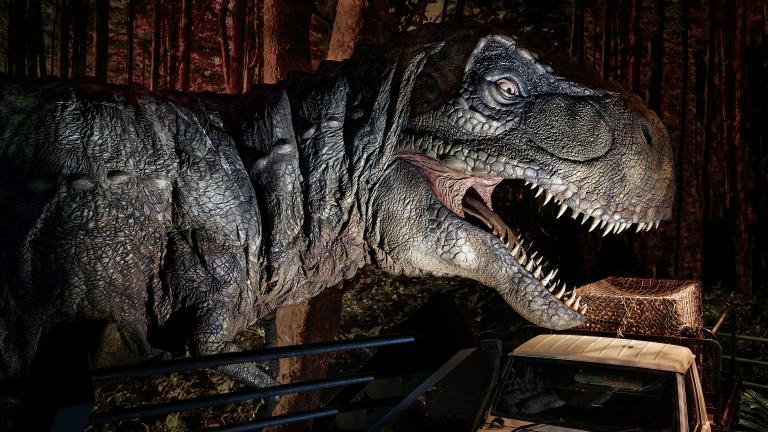 Large-as-Life Dinosaurs Frighten and Fascinate at ‘Jurassic World’
Large-as-Life Dinosaurs Frighten and Fascinate at ‘Jurassic World’
May 31: A new exhibit aims to be an immersive experience that brings the 2015 movie and its gigantic reptilian stars to life.
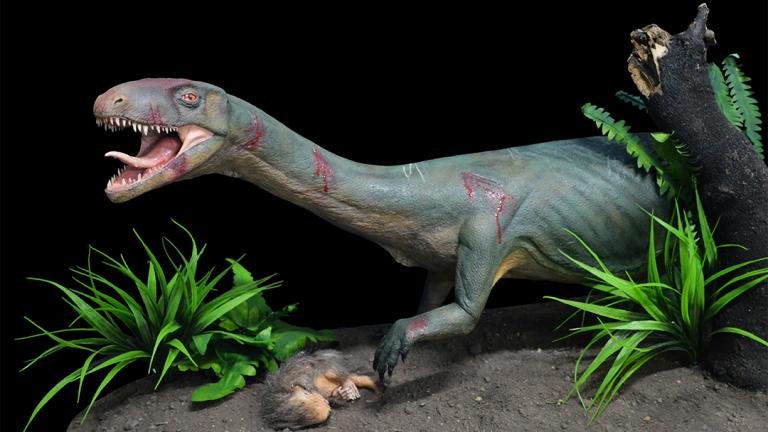 Scientists Discover Early Dinosaur ‘Cousin’ with Surprising Features
Scientists Discover Early Dinosaur ‘Cousin’ with Surprising Features
April 13: A Field Museum researcher is among a global group of scientists who have discovered an early dinosaur that reshapes our understanding of dinosaurs’ evolution.
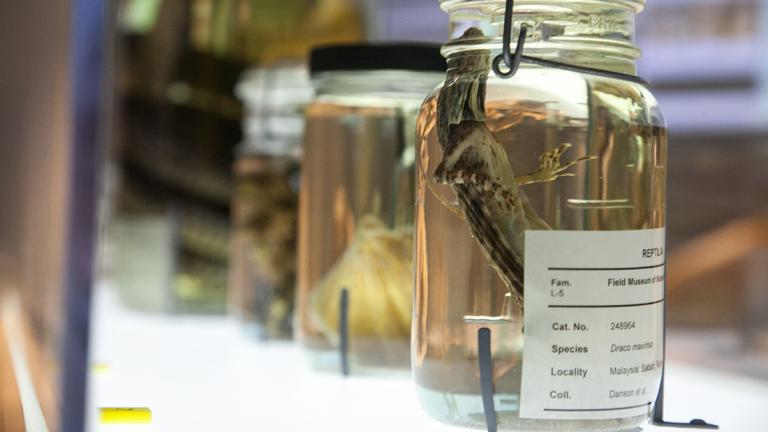 Field Museum Offers Behind-the-Scenes Look at ‘Encyclopedic’ Collections
Field Museum Offers Behind-the-Scenes Look at ‘Encyclopedic’ Collections
March 28: More than 30 million objects are stored behind the scenes at the Field Museum. A new exhibition addresses how scientists from all over the world are using the vast collections to make new discoveries.

